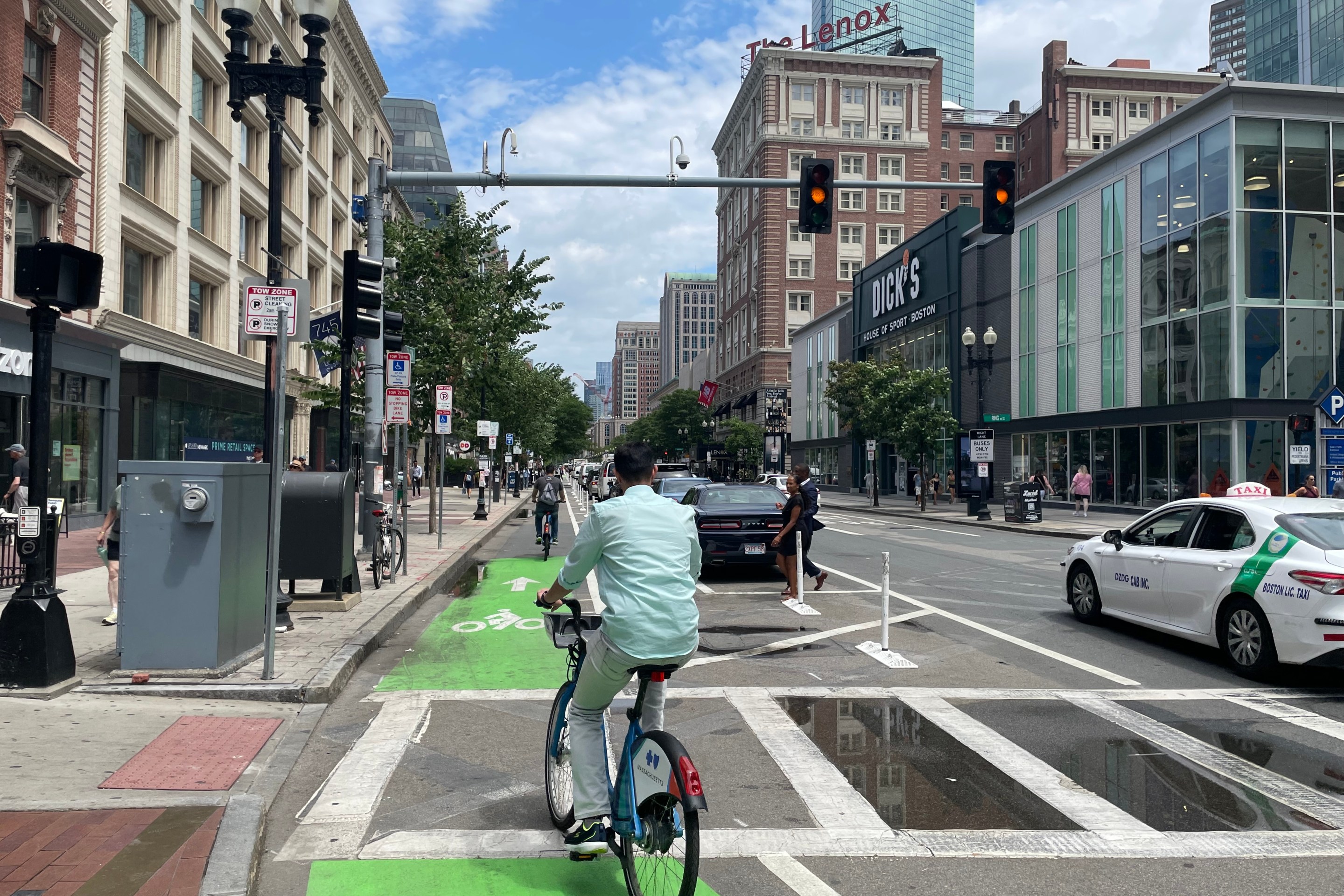The T plans to roll out a new network of four frequent-service bus routes across the northern part of its service area before the end of 2024 in the first implementation phase of its bus network redesign.
For the past year and a half, a persistent shortage of bus drivers has forced the T to table its plans to overhaul bus routes and add more transit service.
But after a year of focused hiring and training efforts and a new labor contract, the T thinks it will have enough drivers to begin "phase one" of its bus network redesign, which will focus on upgrades to bus routes in the cities of Everett, Chelsea, Revere, and Malden.
Everett, Somerville, and Malden will get their first frequent-service bus routes
The backbone of the MBTA's proposed new bus network would be a new system of "frequent-service" bus routes, where buses would arrive every 15 minutes or less all day, 7 days a week.
Currently, there are no bus routes that meet this "frequent-service" standard in Everett, Malden, or Somerville, which are among the region's fastest-growing and most transit-reliant communities.
For the first phase of implementation, the T wants to upgrade four of its existing bus routes north of the Mystic River to the new frequent-service standard: the 104, 109, 110, and 116 (note that the 116 already runs every 15 minutes or less along most of its route).

In other changes, the T would re-route the 104, which currently runs from Malden Center to Sullivan Square, to run through Chelsea and East Boston instead.
Route 117, which mostly follows the same route as the 116, would be discontinued, with the upgraded 110 serving its stops along Central Ave. and Beach Street in Revere.
Another route, the 86, would also run more frequently than it does today, but would also run a much shorter route under the proposed changes.
The 86 currently every 12-20 minutes for most of the day from Cleveland Circle through Brighton to Harvard Square, to Union Square in Somerville, to Sullivan Square in Boston.
The new 86 would only run half of that route, between Harvard and Cleveland Circle. A newly-extended, frequent-service Route 109 will service the other half, east of Harvard Square.
This change would give Everett bus riders a one-seat ride to Union and Harvard Squares, and will result in a net gain in bus service on the corridor between Harvard, Union, and Sullivan Squares.
According to an MBTA spokesperson, all of these route changes combined would add 1,920 service hours per week – an increase of approximately 67 percent above existing service levels on these five routes.
The T also expects to roll out new bus-priority infrastructure along these new routes to help ensure the new services won't get stuck in traffic.
"We are collaborating with our municipal partners on new infrastructure projects to support this service, including bus stops, berthing and layover spaces, signage, and bus priority," wrote MBTA spokesperson Lisa Battiston in an email to StreetsblogMASS.
She added that more details on those projects would be presented at the next MBTA board of directors meeting.
New signs debut clock icon for frequent routes
During the planning phase for the bus network redesign, the MBTA had designated the proposed new frequent routes with a "T" prefix to denote more frequent service: the 109 would have become the T109, for instance.
As they gear up for implementing those new routes, the agency has decided not to use the "T" designation.
"We are not planning to use the 'T' prefix in public-facing route numbers," Battiston told StreetsblogMASS. "We plan to communicate frequent routes in a number of ways (e.g., website, printed schedules, maps), including the 15-minute logo in places like bus stop signs and other materials."
That new 15-minute logo is getting a quiet debut this week as the T installs new, improved bus stop signs at key stops across the region.

The new signs broadly look the same as existing bus stop signs, but they're noticeably larger, and they're double-sided – features that make them much easier to read for riders.
The new signs also introduce a new 15-minute icon for frequent-service bus routes: a yellow clock face with the upper-right quadrant highlighted and a "15" in the middle.
The T has only installed the signs at a few locations for now, and is soliciting feedback before committing to a final design. Learn more here.






